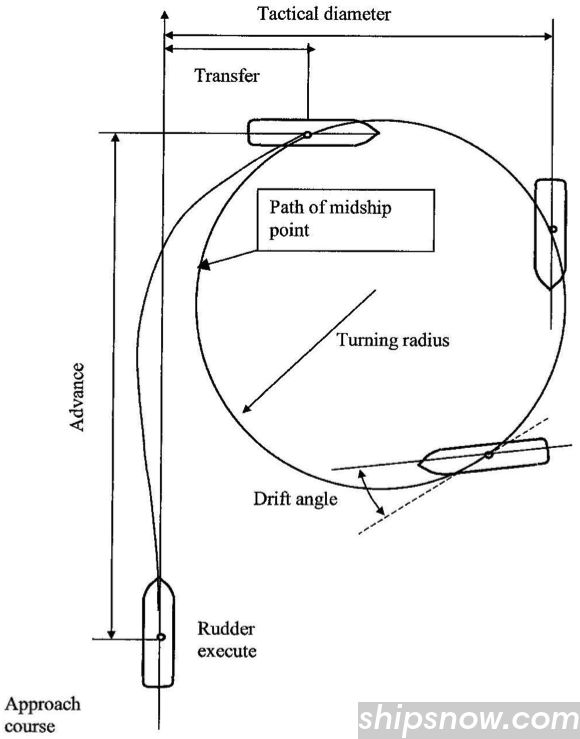Measures and Criteria of Manoeuvrability
Turning Circle

- Advance – distance until 90° change of heading.
- Tactical diameter – 180° change of heading.
- Transfer – 90° change of heading as additional measure of some interest.
The advance, the tactical diameter, and the transfer are given as multiplicity of ship’s length.
IMO standards for Deep water:
- Tactical diameter must be less than 5L
- Advance must be less than 4.5L
Effect of Ship’s Size on Turning Performance

Turning characteristics depend on the ship size.
The tactical diameter is not proportional to the displacement of the ship, but relative tactical diameter D/L is equal for ships of different sizes but geometrically similar.
Effect of Wind and Current on Turning Circle

Effect of Ship’s Parameters on Turning and Course Keeping
Normally in calm water a fully loaded ship at speed about 5 knots with a rudder hard over (35 deg) will turn round 180 degrees in less than 4 ship’s lengths. With a smaller rudder angle the ship will make larger turning circle and gain more speed.

Swept Path
Performing a turning manoeuvre the ship requires some free space. This space is larger than the turning circle, because at each point of the turning circle the ship is positioned at certain angle (drift angle) to the tangent to the path of the centre of gravity (CG).

Ways to Stop the Ship
- Hard turn
- Rudder cycling
- Tactics called Stopping in narrow waterway
The principal reason for introducing the above strategies is desire to shorten the stopping distance by judicious use of the hull and rudder braking forces while maintaining the ship’s controllability .
Rudder cycling procedure

Stopping in narrow waterway

Comparison of Different Stopping Procedures
